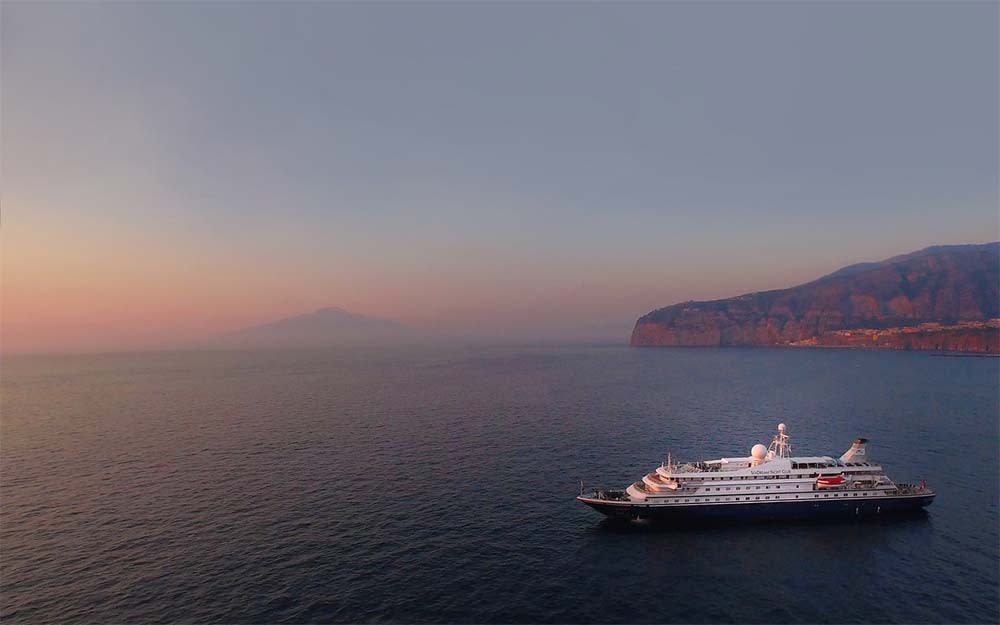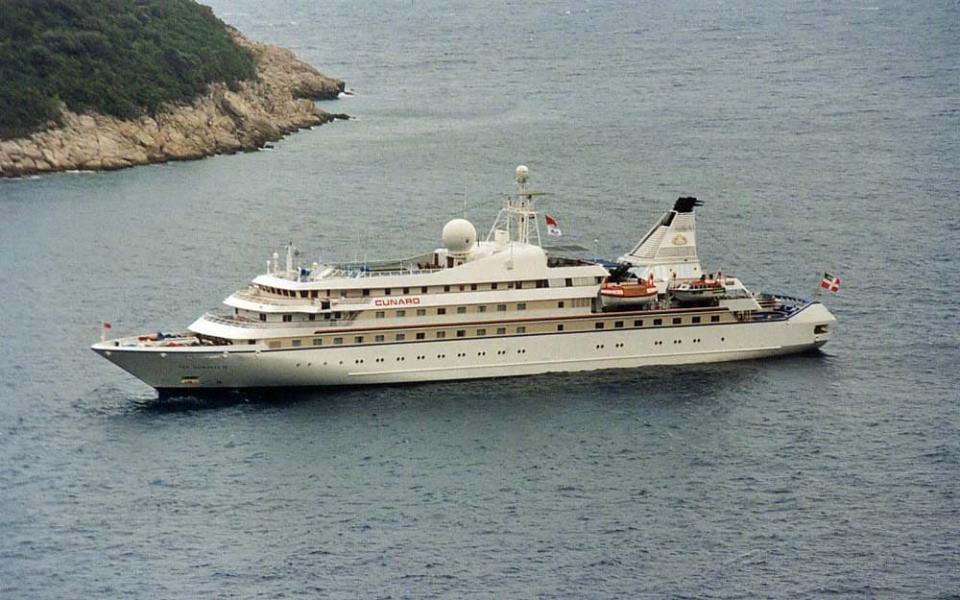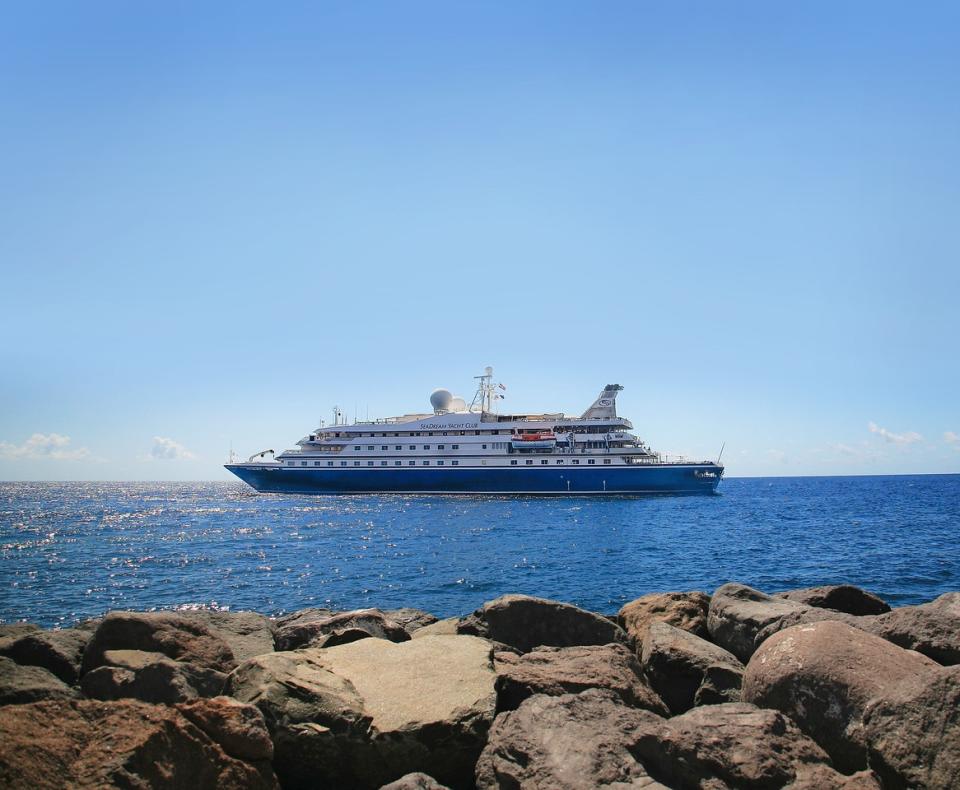The story of SeaDream, the boutique cruise line whose Caribbean comeback was thwarted

One cruise line more than any other has grabbed the headlines recently. The news wasn’t about the biggest ship in the world, or the most innovative; in fact, the spotlight was on one of the smallest cruise ships to sail the seven seas – so pint-sized that it bills itself as a yacht.
It was this factor that influenced the owners, SeaDream Yacht Club, to initiate a series of 21 voyages between Norway and Denmark this summer – all without any incidents of Covid-19. Sadly, despite fastidious testing regimes, their much hyped Caribbean comeback was not so auspicious.
Until this year, few had even heard of SeaDream Yacht Club. Lilliputian in comparison to today’s world of gargantuan floating resorts, the twin yachts accommodate just 112 guests who revel in the vibe of elegance and excellence. The yachts put into islands barely charted, nose into exclusive marinas, and voyage up rivers and into secret harbours where larger craft pass so blithely. It’s a company that’s long been favoured by the cognoscenti, but few appreciate the yachts’ storied pedigree.
Forty years ago, cruising was shrugging off the trappings of a privileged world for the idle rich and morphing into an experience which recreated the zeitgeist of family-friendly, mass-market resorts. At the same time, two very different vessels were being constructed for a Norwegian cruise line – Sea Goddess Cruises. This new company instantly became the go-to choice for that select bunch of cruisers for whom five stars were not enough.
Sea Goddess I entered service in 1984, her almost identical twin, Sea Goddess II joined the following year. With their yacht-inspired design and elegant white hulls, they blazed a trail as the apogee of style and sophistication. As prototypes of the ultra-all-inclusive lifestyle at sea, Dom Pérignon gushed like a fountain and Beluga caviar was doled out with abandon.

Sadly the hijacking of the Italian cruise ship Achille Lauro in Port Said by four Palestinian militants in October 1985 devastated the following year’s cruise business in the Mediterranean. With Sea Goddess Cruises on the verge of bankruptcy, Cunard reached a long-term charter agreement to market and operate the dashing duo. Subsequently, they were transferred to the Seabourn fleet and renamed Seabourn Goddess I and II.
A new chapter for the yachts was heralded in 2001 when Norwegian entrepreneur Atle Brynestad bought the sister-ships and created SeaDream Yacht Club, renaming them SeaDream I and SeaDream II. As the founder and former owner of Seabourn, he knew this was a shrewd purchase. What he couldn’t possibly predict was that even before the euphoria of the media showcase voyage from Miami to the Bahamas had died down, the terrorist attacks of 9/11 would decimate the cruise industry. With more than a soupçon of perspicacity, SeaDream Yacht Club prevailed and has gone from strength to strength for two decades. But in 2020 it faced another adversary.
The amount of consultation and planning that went into ensuring all possible Covid-secure measures would enable SeaDream I to operate their Caribbean cruises in a “safe bubble” cannot be understated. The yacht’s crew was certified after completing the World Health Organisation’s infection prevention and control for the novel coronavirus course; and to ensure social distancing could be observed, capacity was limited to approximately half the number of the normal guests – all of whom had to report multiple negative Covid tests before they boarded.
Speaking to Telegraph Travel, Andreas Brynestad, SeaDream’s executive vice president and son of Atle, said: “There is no guarantee that we will never get Covid; there is no such thing as 100 per cent certainty. SeaDream was in the public eye during our first cruise from Barbados. We exceeded all Covid testing protocols which was a new benchmark in cruising.
“Last week around one million travellers flew in the US where there is no social distancing, and passenger turnover is measured in hours, not days, yet there is no testing before or after their flight. This is not a level playing field.”

After just one cruise to St Vincent and the Grenadines, SeaDream I had to abandon the sailing, demonstrating that even with the most stringent measures, Covid-19 cases will slip through the net. Sadly, their “Barbados bubble” had burst and the rest of their 2020 season has been cancelled.
The takeaway from the SeaDream debacle is that cruise lines have to accept the spectre of coronavirus will be prevalent until there’s a turbocharged mass immunisation programme. It’s how they handle it in the meantime that will allow them to steer a course to the promised sea, one that’s reigned over by the mythological Sea Goddess.
It can be no coincidence that less than a week after the aborted SeaDream cruise, the US Centers for Disease Control and Prevention raised its warning to Level 4, its highest level for cruise travel; and continued to recommend deferring travel on cruise ships worldwide.

